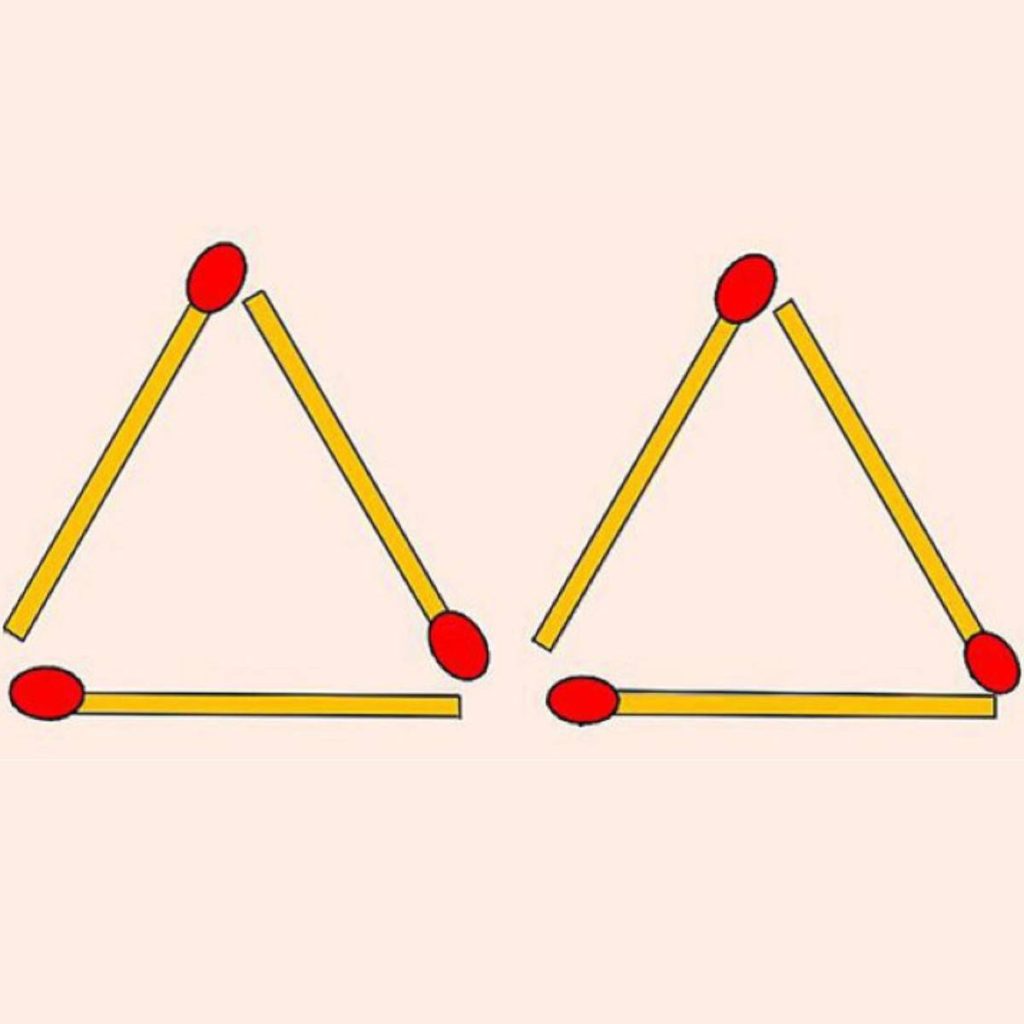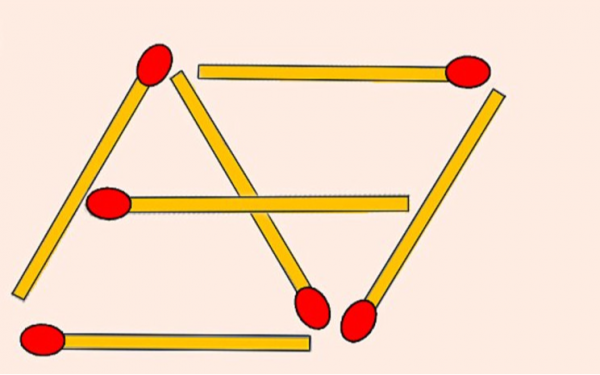Matchstick puzzles have always been a great way to challenge your mind and get your creative juices flowing. They’re simple yet incredibly effective at making you think outside the box. Today’s puzzle is no exception. The challenge? Take the matchstick arrangement you see above and move just two matchsticks to form four triangles. It sounds simple, but it’s trickier than you might think. Let’s break it down.

Why Matchstick Puzzles Are So Popular
Before we dive into the solution, let’s take a moment to appreciate the brilliance of matchstick puzzles. These seemingly simple challenges have been around for decades and remain a favorite among puzzle enthusiasts. Why?
- They Test Your Spatial Thinking: Matchstick puzzles force you to think in terms of shapes, angles, and positioning.
- They Encourage Lateral Thinking: You often need to go beyond conventional methods to solve them.
- They’re Fun for All Ages: Whether you’re a child or an adult, these puzzles are both entertaining and educational.
This specific puzzle is a perfect example of how such challenges push your brain to see solutions from a new perspective.
Understanding the Puzzle: Move Two Matchsticks
In the initial setup, you have two triangles side by side, each made of three matchsticks. Your task is to rearrange this layout by moving two matchsticks to form four triangles.
At first glance, you might think it’s impossible. After all, how can you create more triangles with fewer moves? But here’s a hint: The solution lies in thinking three-dimensionally.
The Key to Solving the Puzzle
To solve this riddle, you need to realize that the solution involves building a three-dimensional structure. This puzzle is a classic example of how our brains are conditioned to think in two dimensions, even when the answer requires us to think in 3D.
Here’s how you can solve it step by step:
- Visualize a Pyramid Structure: Instead of creating four triangles on a flat surface, imagine stacking matchsticks to create a triangular pyramid (a tetrahedron).
- Move the Matchsticks:
- Take one matchstick from one of the base triangles.
- Use it to form a new point by positioning it above the base structure.
- Similarly, take a matchstick from the other triangle and add it to this new 3D point.
- Result: The triangular pyramid will have four triangular faces—three on the sides and one on the base.

Breaking the Mental Barrier of 2D Thinking
This puzzle is a great exercise in breaking out of your comfort zone when it comes to problem-solving. Most of us are so used to thinking in two dimensions that we forget there’s an entire third dimension to consider.
Here’s why this puzzle works so well:
- It Challenges Assumptions: We naturally assume the solution must stay within the same plane as the original setup.
- It Rewards Creativity: Thinking of the pyramid structure requires you to think beyond the obvious.
- It Demonstrates the Power of Perspective: Changing your perspective—literally and figuratively—can open up new possibilities.
Tips for Solving Similar Matchstick Puzzles
If you enjoyed this challenge, here are a few tips to help you tackle similar puzzles in the future:
- Question the Constraints: Are you limited to 2D, or can you use 3D? Can you break any “rules” you’ve assumed?
- Think About Geometry: Brush up on basic geometric shapes and their properties.
- Experiment: Don’t be afraid to move the matchsticks and try different configurations. Sometimes, trial and error leads to the “aha!” moment.
- Take Your Time: Some puzzles require patience. Step back, take a deep breath, and revisit the challenge with fresh eyes.
The Joy of Solving Matchstick Puzzles
Puzzles like this one remind us why we love riddles and brain teasers so much. They force us to think differently, challenge our assumptions, and reward us with a sense of accomplishment when we finally crack them.
In this case, moving just two matchsticks to form four triangles might have seemed impossible at first. But with a little lateral thinking and creativity, the solution becomes clear.
Conclusion: Think Outside the Box (Or in This Case, Plane)
The “move two matchsticks to form four triangles” puzzle is a fantastic example of how thinking outside the box—literally—can lead to creative solutions. It teaches us to challenge our assumptions and consider new perspectives, both in puzzles and in life.
Next time you come across a matchstick puzzle or any other brain teaser, remember this: Sometimes, the solution isn’t about working harder but thinking smarter. So, go ahead and share this puzzle with your friends and family—it’s guaranteed to spark some fun and lively discussions!